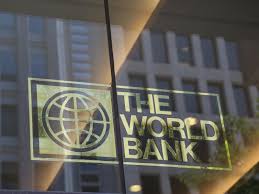New Delhi: India will need to grow at an average 7.8 per cent to become a high-income country by 2047, a World Bank report said Friday.
To achieve this goal, India would require reforms in the financial sector as well as in the land and labour market, the World Bank said in its India Country Memorandum titled ‘Becoming a High-Income Economy in a Generation’.
Recognizing India’s fast pace of growth, averaging 6.3 per cent between 2000 and 2024, the report notes that India’s past achievements provide the foundation for its future ambitions.
“However, reaching the ambitious target of becoming a high-income economy by 2047 will not be possible in a business-as-usual scenario… for India to become a high-income economy by 2047, its GNI (gross national income) per capita would have to increase by nearly 8 times over the current levels; growth would have to accelerate further and to remain high over the next two decades, a feat that few countries have achieved.
“To meet this target, given the less conducive external environment, India would need to not only maintain ongoing initiatives but expand and intensify reforms,” the World Bank report said.
In recent years, India has introduced a host of structural reforms to transform the country into a global manufacturing hub, to boost infrastructure, improve human capital, and leverage digitization, while at the same time bolstering macroeconomic stability.
“To reach high income by 2047, India’s growth rate needs to average 7.8 per cent, in real terms, over the coming decades… Only an ‘accelerated reforms’ package would put India on track to become high-income by 2047,” the report said.
World Bank India Country Director Auguste Tano Kouame said lessons from countries like Chile, Korea and Poland show how they have successfully made the transition from middle to high-income countries by deepening their integration into the global economy.
The report said that over the past decades, India has developed at a scale and pace that few would have thought possible.
From 2000 to today, in real terms, the economy has grown nearly fourfold, and GDP per capita has almost tripled. Because India grew faster than the rest of the world, its share in the global economy has doubled from 1.6 per cent in 2000 to 3.4 per cent in 2023. India has become the world’s fifth largest economy.
“This remarkable development story also includes a steep decline in extreme poverty and massive expansion of service delivery and essential infrastructure. Building on these achievements, India has set the ambitious goal of becoming a high-income country by 2047,” the report added.
India can chart its own path by stepping up the pace of reforms and building on its past achievements, Kouame said.
The report evaluates three scenarios for India’s growth trajectory over the next 22 years.
“India can take advantage of its demographic dividend by investing in human capital, creating enabling conditions for more and better jobs and raising female labour force participation rates from 35.6 per cent to 50 per cent by 2047,” said Emilia Skrok and Rangeet Ghosh, co-authors of the report.
In the past three fiscal years, India has accelerated its average growth rate to 7.2 per cent, it said.
In order to maintain this acceleration and attain an average growth rate of 7.8 per cent (in real terms) over the next two decades, the Country Economic Memorandum recommends four critical areas for policy action, including increasing investment, promoting structural transformation and creating more jobs.
The Country Economic Memorandum is a flagship analytical report on a country’s economy undertaken by the World Bank across the globe.
The report reviews the economic and social developments in India over the past 20 years, outlines the current challenges facing the economy, and recommends reforms necessary to achieve sustainable and inclusive long-term growth as the country aspires to become a high-income economy by 2047.
PTI
